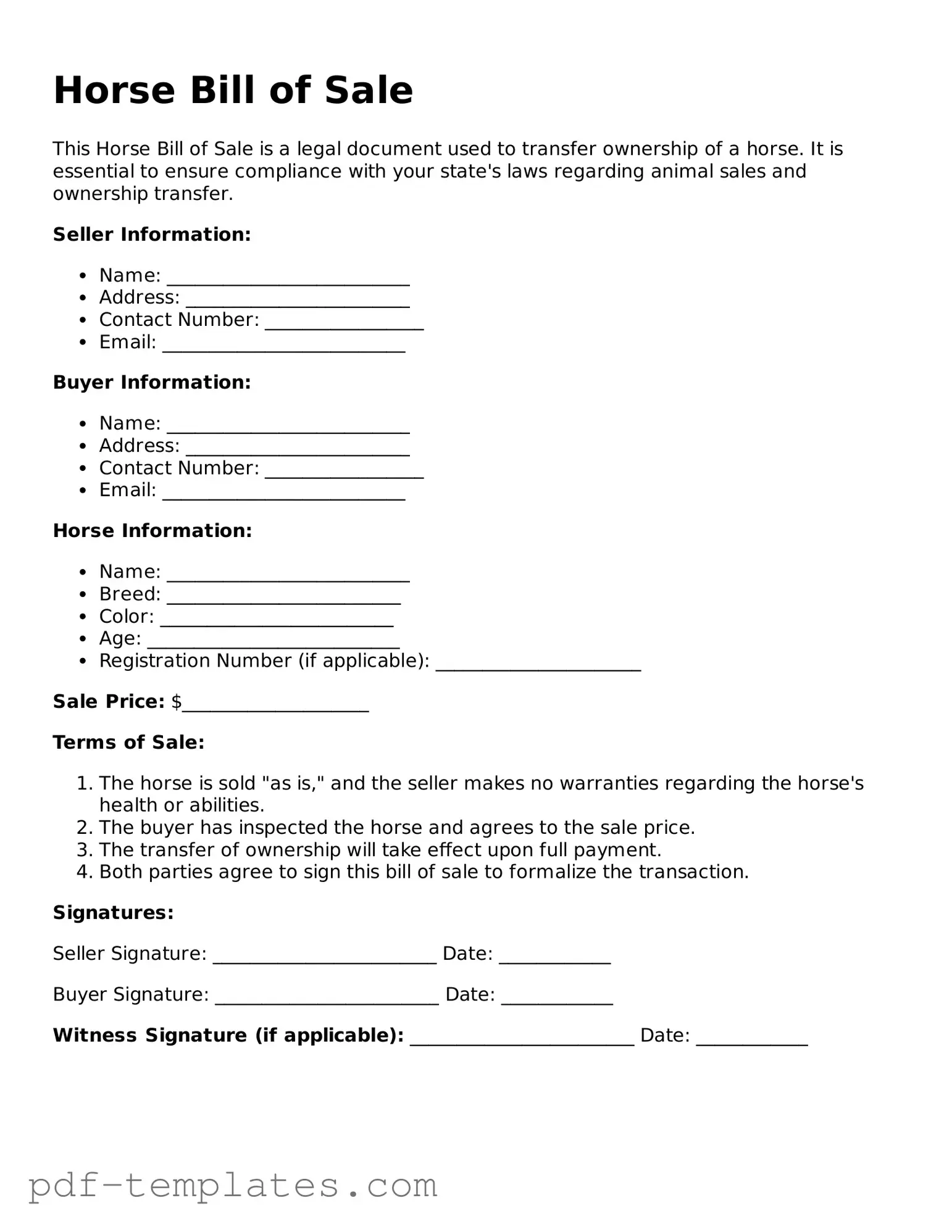The Horse Bill of Sale is similar to a Vehicle Bill of Sale. Both documents serve as a legal record of the transfer of ownership from one party to another. In the case of a vehicle, the document includes details such as the make, model, year, and Vehicle Identification Number (VIN). Similarly, the Horse Bill of Sale includes specifics about the horse, such as breed, age, and registration number if applicable. Both documents protect the interests of the buyer and seller by providing a clear outline of the transaction and can be used to resolve disputes if they arise.
For those interested in securing their legacy and ensuring that their final wishes are respected, it is essential to craft a comprehensive estate plan. This includes preparing a Last Will and Testament, which outlines how assets will be distributed and may include appointing a guardian for minor children. Those seeking guidance can download an editable form to simplify the process and ensure all necessary details are covered.
Another document comparable to the Horse Bill of Sale is the Pet Adoption Agreement. This agreement outlines the terms under which an individual adopts a pet, ensuring that the new owner understands their responsibilities. Just as the Horse Bill of Sale details the condition and history of the horse, the Pet Adoption Agreement often includes information about the pet’s health, behavior, and any necessary care instructions. Both documents aim to ensure that the new owner is well-informed and prepared for the responsibilities of ownership.
A third similar document is the Livestock Bill of Sale. This document is used for the sale of farm animals, including cattle, sheep, and pigs. Like the Horse Bill of Sale, it records essential details about the animal being sold, such as its breed, age, and health status. Both documents serve to protect the seller’s rights by providing proof of sale and ownership transfer, and they offer the buyer assurance regarding the condition and legal status of the animal being purchased.
The Equine Lease Agreement also shares similarities with the Horse Bill of Sale. While the Horse Bill of Sale signifies a complete transfer of ownership, the Equine Lease Agreement allows one party to use a horse owned by another party for a specified period. Both documents outline the responsibilities of the parties involved, including care, maintenance, and financial obligations. This ensures that both the horse’s well-being and the interests of the owner are adequately addressed.
Finally, the Real Estate Purchase Agreement can be compared to the Horse Bill of Sale in terms of its purpose in facilitating a transaction. Both documents provide a framework for the sale process, detailing the terms of the agreement, including price and conditions. While the Horse Bill of Sale focuses on the transfer of a horse, the Real Estate Purchase Agreement addresses the sale of property. Both documents are essential for establishing clear expectations and protecting the rights of both buyers and sellers.
